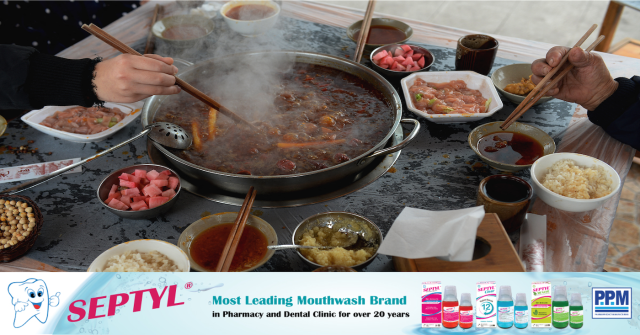Chinese Hot Pot Popularity Grows

- By Nhor Sokhoeurn
- February 10, 2024 5:34 PM
PHNOM PENH – On the street in the Boeng Trabek area lies a packed restaurant with customers queuing to get seats.
They are waiting at the Hot Pot and BBQ for their turn to have a hot pot — a Chinese-originated soup flavored with meats and fresh vegetables.
The hot pot, called Sichuan soup by locals, is popular in Chinese culture. People often have it at gatherings or on social occasions. It is a simmering pot of the savory, spicy, creamy and slightly sweet notes of broth, or soup base, at the center of a table.
Diners can choose their soup base and meat and veggies to put into the pot. In Chinese, hot pot is translated literally as “into the fire” pot. The way people cook it varies in different regions such as spicy Sichuan style, northern Chinese style, Korean style, and Japanese style.
In Cambodia, hot pots have become popular among people who love the strong taste of Chinese ingredients in the soup.
In the restaurant, operator Sey Ha had his hands full with orders while keeping his eye on about 10 waiters and waitresses serving the tables.
He says he’s always busy managing services from noon until evening.
“Peak time is around 12 to 1 pm because it is a lunch break when people find something to eat and in the evening around 5 to 7 pm is also peak time,” he said.
A lot of people come to his place because the soup has been altered to suit Cambodian tastes and is not so strong.
Pov and her friends eat there regularly. She said she liked the soup and had it almost every day.
“I like to eat Sichuan soup is because it nice. I like to eat since it became popular in Cambodia maybe in 2020, I guess,” she said. “At first, I just wanted to try it out, but since then, it has become my go-to meal for gatherings and my favorite of all times.”
Another soup fan, Pich who works for Starbucks, also likes Sichuan soup with her colleagues after work.
“I like to eat Sichuan because it is easy to cook, and it’s nice. At first, I disliked it because of its smell but after that, I wanted to eat it again and again,” Pich said.
Si Na, who works in the restaurant, said he saw many customers every day. “The Sichuan soup is never left in the pot,” he said. “We can sell out everything.”
He said there was a mixture of customers including workers, students and children. “I feel so tired after work due to the busy operation time with many customers,” he added.
Hot pot restaurants and buffets are increasing every day in Cambodia and there are more than 24 Hot Pot soup shops in Phnom Penh.















